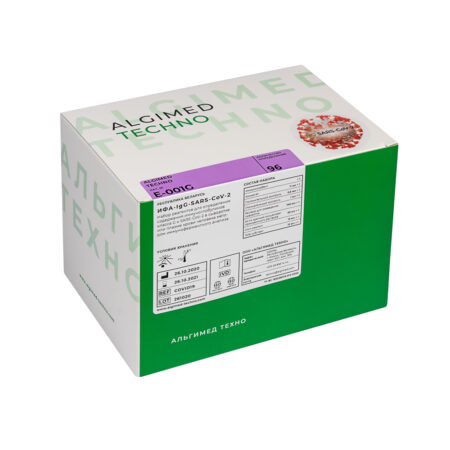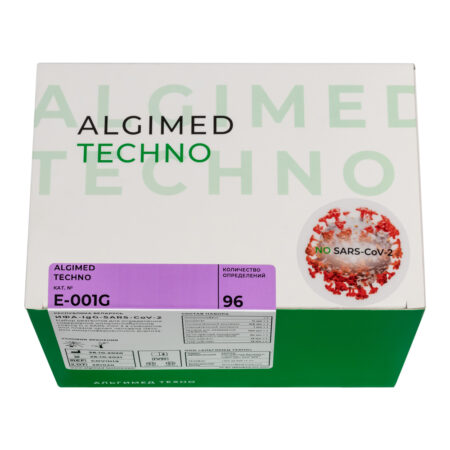


«ELISA-IgG-Sars-CoV‑2» reagent kit
«ELISA-IgG-Sars-CoV‑2» reagent kit created to detect immunoglobulins G by ELISA method. The Kit is confgured to analyze 46 unknown samples in negative control triplicate, positive control monoplicate. 96 defnitions in total.
PDF for download
Video instruction for using «ELISA-IgG-Sars-CoV‑2»
How to determine antibodies to the SARS-CoV-2 coronavirus (video)
360° Photo
In Vitro diagnostic ELISA based test kit for immunoglobulins G to SARS-Cov-2 in serum and plasma (EDTA, heparin, ACD or citrate).
Immunoglobulin G (IgG) represents approximately 75% of the human blood plasma antibodies. IgG is involved in infection control throughout the human body. It forms an important defense against a variety of pathogens: viruses, bacteria, fungi.
The IgG detection to SARS-Cov‑2 may assist to determine the immune response in patients with coronavirus disease, as well as to estimate the antibodies level in blood plasma in patients recovered.
| Kit components | Quantity |
|---|---|
| Immunoadsorbent | 1 pce |
| Conjugate | 11 ml |
| Positive Control | 0,5 ml |
| Negative Control | 1 ml |
| Sample Diluent | 100 ml |
| Wash Concentrate(20x) | 20 ml |
| TMB Substrate | 12 ml |
| Stop Solution | 12 ml |
Components marked with * are interchaµgeable within their shelf-life if series number coincides.
The principle is based on indirect non-competitive ELISA analysis. The study sample and control sample are incubated in the wells coated with arecombinant nucleocapsic protein. Immunoglobulins to this protein when presentin the sample bind specifically to the protein immobilized in the wells. Next, IgG-class antibodies are detected with the help of a second antibody in aperoxidase conjugate. After incubation with the substrate and stop solution application, the optical density of the sample is measured at 450 nm. The measuredoptical density is directly related to the number of IgG in the tested and control samples.